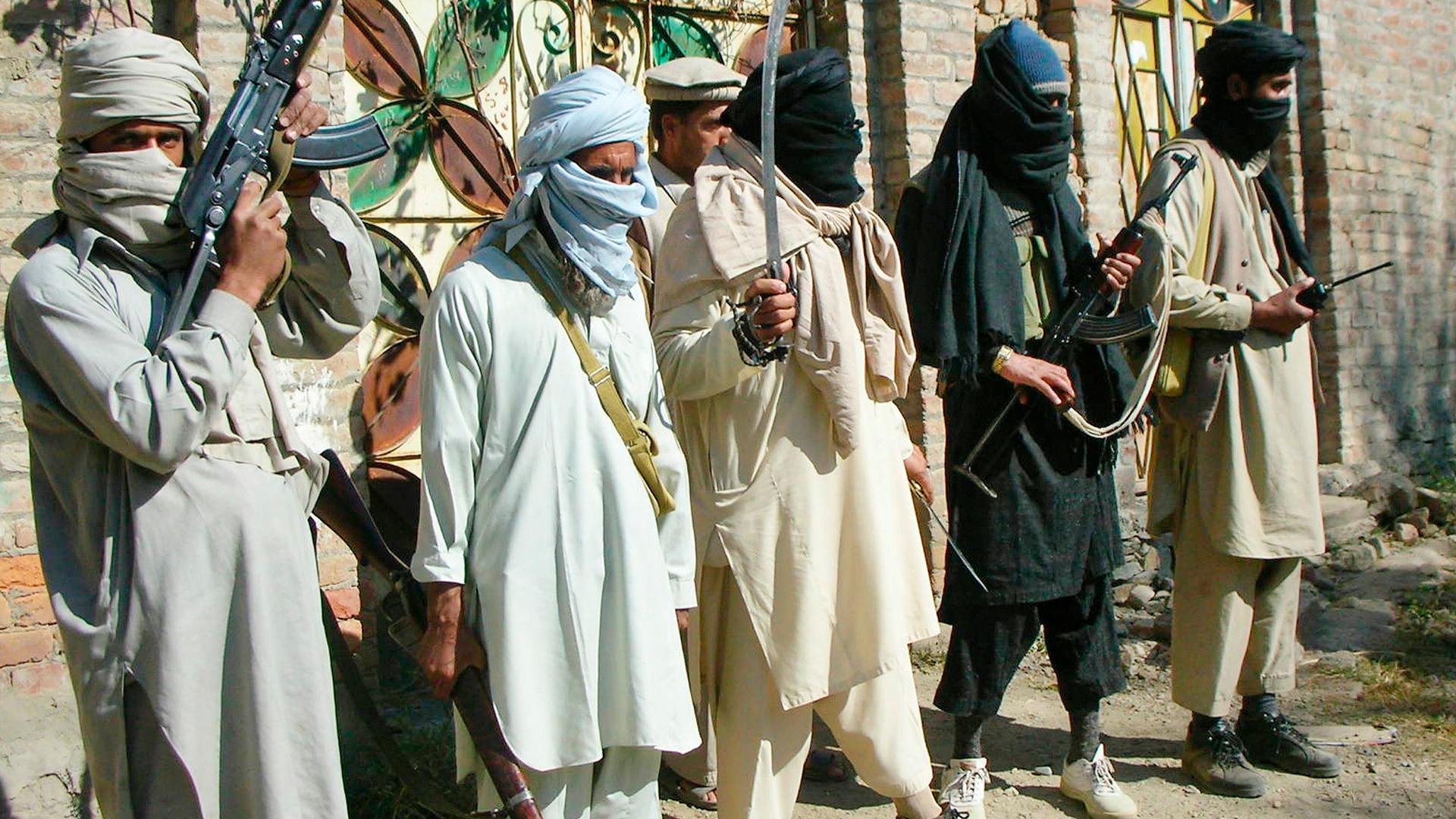The group has modified its aims to try and pose a new challenge to the Pakistani state which has so far succeeded in pushing it underground.
After years of near-irrelevance, the Tehreek-e-Taliban Pakistan (TTP), an umbrella movement of the Afghanistan-based Pakistani tribal militant groups, seems to be regrouping and reviving itself. This is evident from the reunification of various TTP splinter factions, cessation of leadership disputes, the reappearance of its operatives into the erstwhile strongholds in the former FATA region, and an uptick of terrorist attacks in Pakistan’s peripheral areas.
Regrouping and reunification is part of TTP’s long-term future planning ahead of the expected intra-Afghan peace talks and the US exit from Afghanistan. The far-reaching implications on Pakistan’s internal security landscape need to be put in perspective.
From its formation in 2007 until 2014, TTP at its peak was one of the most dreaded terrorist groups in Pakistan. Operating out of the former FATA region, TTP acted as Al Qaeda’s operational arm in Pakistan alongside hosting remnants of the Afghan Taliban. The group also had a strong footprint in the picturesque mountainous district of Swat and Pakistan’s largest city, Karachi. During this period, TTP carried out audacious terrorist attacks in Pakistan like the 2009 attack on the army’s General Headquarters, the 2011 attack on the naval station, PNS Mehran, and the devastating 2014 attack on the Army Public School in Peshawar, among others.
However, TTP’s over-the-top violence and ‘global jihadist’ rhetoric contributed to its decline. The 2009 Camp Chapman attack in Khost, Afghanistan and the 2010 botched Times Square bombing in New York (which they claimed) brought TTP in the crosshairs of the US counter-terrorism campaign.
In subsequent years, the US eliminated TTP’s top leaders in drone strikes, including Baitullah Mehsud, Hakimullah Mehsud and Waliur Rehman. TTP’s problems were further compounded by the Pakistani Operation Zarb-e-Azb launched in the aftermath of the tragic APS attack.
With Fazlullah’s appointment in 2014, for the first time, TTP’s leadership moved away from the Mehsud tribe, the most formidable faction which formed the group’s backbone. Under Fazlullah, TTP witnessed political fratricide and splintering. The factionalisation led to the creation of Jamaat-ul-Ahrar while other groupings gravitated towards the so-called Islamic State and formed its Af-Pak franchise, ISKP. On the other hand, some factions of the ‘Punjabi Taliban’ disengaged from fighting by availing the PML-N government’s amnesty offer. These inter-factional feuds and leadership disagreements reduced TTP to a shadow of its former self.
Shifting aim
TTP’s supposed revival started with the appointment of Noor Wali Mehsud as its leader in 2018 following the drone assassination of Fazlullah in Kunar, Afghanistan. From the get-go, his singular focus was the reunification of various splinter factions.
Noor Wali, who is a former political party worker in Pakistan, not only has mainstream political exposure, but unlike Baitullah, Hakimullah and Fazlullah, he is also a religious scholar, ideologue and author of a book. Rather than being swayed by short-lived tactical brilliance, he took a long-term view by focusing on a strategic reorientation of the group.
Wali has invested a lot of time and energy in re-articulating TTP’s ideological stance. Before this, notwithstanding the group’s global jihadist rhetoric and closeness with Al Qaeda, its message and operational focus were confusing and self-combusting. Right after assuming TTP’s charge, Noor Wali issued a code of conduct to bring organisational discipline within the terror group.
Since then, TTP has been regularly publishing a propaganda magazine Mujallah Taliban to articulate the group’s position on different issues. Interestingly, TTP also released two issues of Sunnat-e-Khaula, a magazine focusing on female recruitment and radicalisation in Pakistan.
TTP is reinventing itself by pitching itself as a pan-Islamist and Pashtun-centric group while moving away from its grandiose global jihadist posturing. However, it remains to be seen if the group will disassociate itself from Al Qaeda or not.
TTP’s new ideological articulation appears to be a more pragmatic blend of pan-Islamism & Pashtun-centrism. This pragmatism is also evident in the terror group’s operational focus and use of violence. For instance, TTP has been careful in its target selection, attacking security personnel and government installations, while avoiding non-combatants.
The Taliban’s triumphant narratives will be a shot in the arm for TTP; it will resonate with its sympathisers potentially fueling recruitment and radicalisation. It seems the TTP has learned from the Taliban’s Afghan-centric approach that a limited and realistic approach backed by a coherent organisational structure and well-articulated narrative has higher chances of success.
The history of terrorist groups also indicates that groups with practical and limited aims have a higher probability of success as opposed to those who try to change the world profoundly.
Despite contextual variations, the trajectory of TTP’s rise, fall and resurgence seem somewhat similar to that of the Taliban in Afghanistan and the Islamic State in Iraq (Daesh). Just when the policy community wrote off both groups as ragtag tribal militias consigned to the dustbin of history, they rose from ashes.
A recent UN report has indicated that there are 6,000 to 6,500 TTP militants in Afghanistan. This number, along with the mergers mentioned above, makes TTP a force to reckon with.
The terror group still poses an imminent counter-terrorism challenge to Pakistan and neglecting it will be a mistake. Instead, TTP’s recent moves, mergers and efforts to localise its narratives should be re-evaluated against its cooperative and conflictual relations with other militant groups in the region.










Discussion about this post